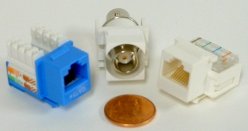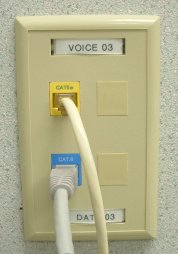What does AWG mean?
AWG stands for American Wire Gauge, and it is a standard used for denoting wire conductor diameter. The system is counter-intuitive, so the lower the AWG, the thicker the conductor.
Actually the system is even more counter-intuitive than that. Once you get to wires thicker than 0 AWG, you do not use negative numbers. Instead you just add more zeroes and end up with wire sizes like 00000 AWG, or, written another way, 5/0 AWG.
If you pull a telephone or computer line out of the wall and snip off the end, chance are good that you'll be looking at conductors that are between 0.016 and 0.025 inches across which is 26 to 22 AWG. (That's 0.4039 to 0.6452 millimeters for the metric-ly inclined.) If you go home and rip a power line out of the wall for a snip--a very bad idea, you'll probably see conductors between 14 and 12 AWG.
The thicker the wire, the lower the AWG, and the lower the resistance per unit of length. For more information about load carrying capacity and the relationship of conductor diameter to AWG, visit Power Stream: Wire Gauge and Current Limits.














